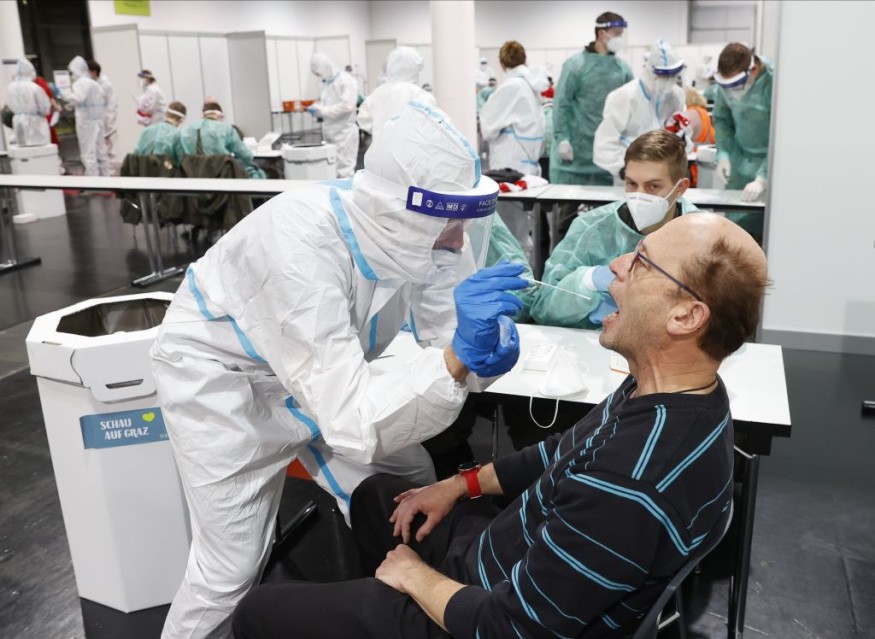On December 28, the US Food and Drug Administration (FDA) announced that rapid tests may be less sensitive to the Omicron variant. That is why saliva tests are more recommended than nasal rapid antigen tests.
On the other hand, some experts said that throat swabs type of rapid tests can still detect the new variant and is more reliable than nasal swabs. Dr. Michael Daignault, an emergency doctor in Los Angeles, explained that this is because more virus potentially lives in the throat.

How Effective are Throat Swabs?
Throat swabs or the rapid test that involves a procedure of sweeping a swab at the back of the mouth is supported by many experts, saying it is a go-to test of many people and can detect the Omicron variant despite the recent announcement of FDA.
Slate reported that studies have shown the high transmissibility rate of the Omicron variant and when scientists compared the results from nasal and saliva swabs, they found that the former caught all the Delta cases but missed the 15 Omicron cases. Meanwhile, the former caught all Omicron cases.
These findings showed that COVID-19 tests using saliva samples are better in detecting the new variant than nasal swabs alone. More so, Stanford immunologist Michal Caspi Tan was convinced of the findings after several people also reported having strep-like symptoms.
She recommends shifting home-testing methodology, although for herself she uses both nasal and throat swabs for better accuracy and to reduce chances of false negative. Similarly, epidemiologist Michael Mina said in his tweet on Monday that a throat swab plus a nasal swab may improve the chances that the swab could pick up the virus.
But no matter which of the two types of rapid tests, experts said to not eat, drink, or use toothpaste for half an hour before swabbing because it could cause a false positive.
How to Perform a Throat Swab at Home?
The government of Australia has put out some guidelines for home care throat and nasal swab testing in which people can collect a sample by themselves ad ask the clinic or healthcare worker to test it for them. Below are the steps provided by the Pubic Health Laboratory Network (PHLN):
Preparation and Materials
- Use a sterile swab for the test to prevent contamination.
- Wash hands or use gloves before performing the collection of swab samples.
- Use a tongue depressor, such as a flat, thin piece of wood or an ice cream stick to hold the tongue in place.
- Prepare a mirror.
Throat Swab
- Unscrew the lid of the packet containing the swab and stand it on a stable table or surface.
- Take the swab out of the packet without touching the padded tip.
- Tilt your head back in front of a mirror and stick your tongue out.
- Hold your tongue in place using the tongue depressor to get a better view of the tonsils.
- Gently scrape the back of the throat and tonsil area without touching the sides of the mouth or the tongue.
- Take the swab out carefully still without it touching the mouth or tongue.
- For nasal swabbing, use the same swab to get a sample.
Packaging of the Swab Sample
- Insert the padded tip of the swab with the throat and nasal sample into the tube.
- Some testing kits might need the end of the swab to be snapped, which is indicated on the testing kit instructions.
- Make sure to firmly close the lid onto the tube to prevent any leakage.
- Wash or sanitize your hands after packaging the swab sample.
- Label carefully the tube and write "self-collection" on the specimen type section.
- Take your swab sample to a health service provider and follow instructions for delivery.
RELATED ARTICLE: COVID-19 Omicron Variant Detection Method: Saliva Swabs More Effective, Rapid Tests Not Recommended
Check out more news and information on COVID-19 in Science Times.
© 2025 ScienceTimes.com All rights reserved. Do not reproduce without permission. The window to the world of Science Times.











